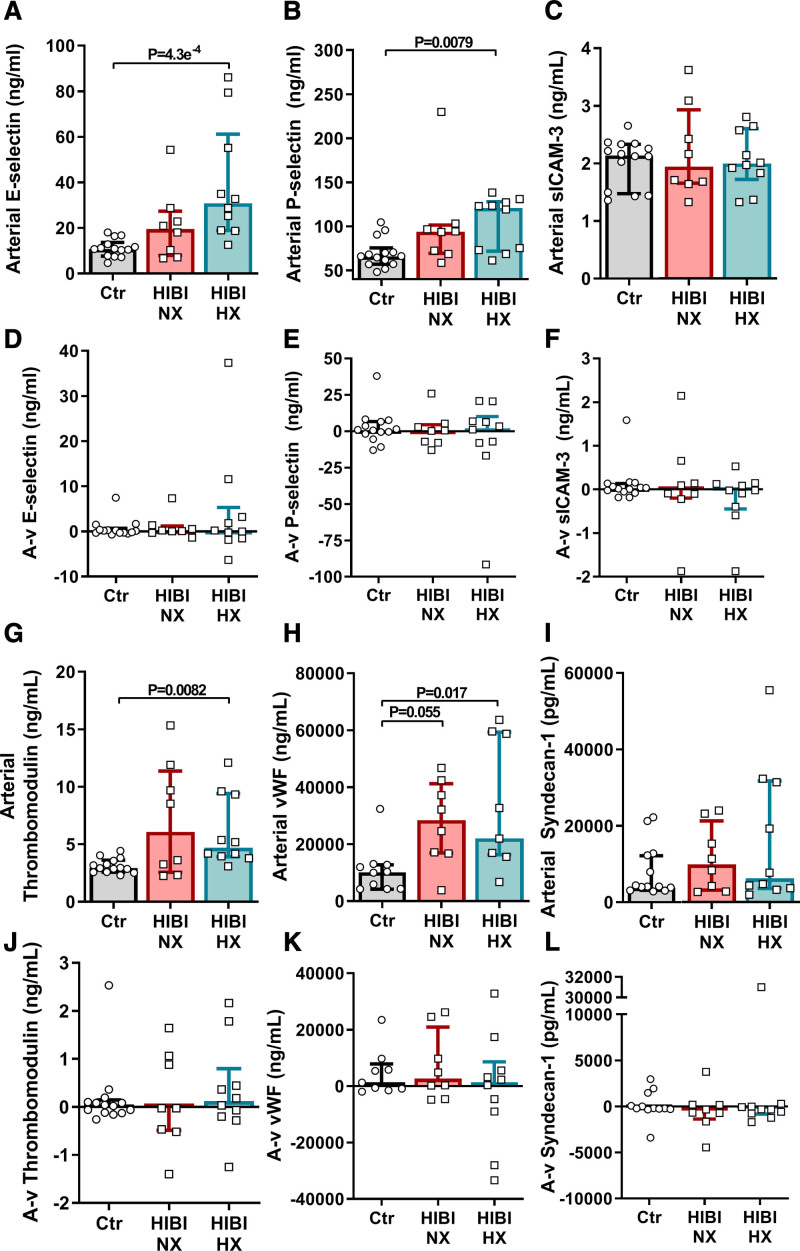Figure 4.
Secondary brain hypoxia is not associated with sustained cerebral endothelial injury. Arterial and jugular venous blood draws were acquired for both healthy controls (Ctr) and for patients with hypoxic ischemic brain injury (HIBI) with brain normoxia (NX; red) and hypoxia (HX; cyan). Data are presented as bars (median±interquartile range) with individual patient data overlaid for each group. Arterial serum biomarker concentrations are depicted for E-selectin (A), P-selection (B), sICAM-3 (soluble intracellular adhesion molecule-3; C), thrombomodulin (G), vWF (von Willebrand Factor; H) and syndecan-1 (I). Simultaneous collection of arterial and jugular venous blood, and calculation of the consequent arterial-to-venous gradient (A-v) allows for determination of biomarker release from the brain, where a negative (−) A-v gradient indicates biomarker release from the brain. These data for each biomarker are depicted under the corresponding arterial data within D–F and J–L. No significant cerebral release was detected. Significance testing between groups was conducted with a Kruskal-Wallis test. Following the detection of a significant effect, post hoc testing was conducted and corrected for multiple comparisons with a Dunn’s multiple comparisons test. P<0.05 was considered statistically significant.

